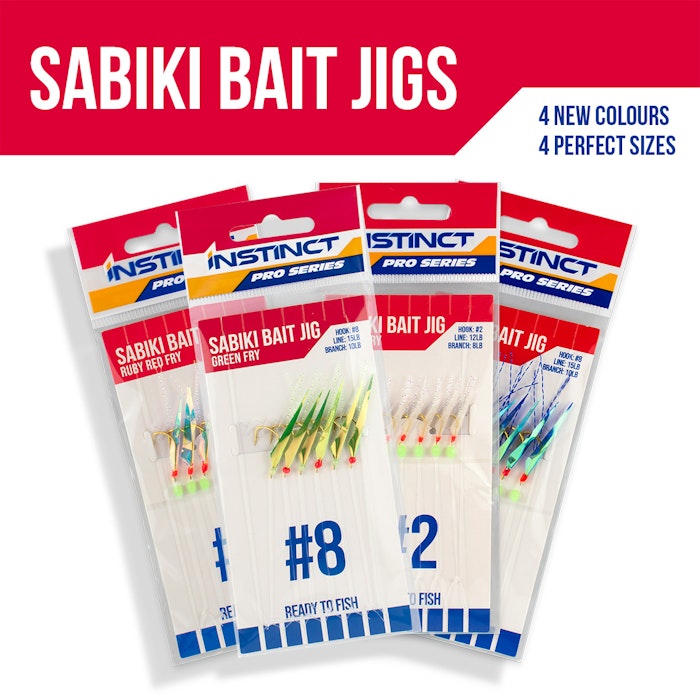
Snapper are a highly sought-after target in Aussie waters and for good reason! They’re prized for their hard fight and tasty flesh – they also release well. If you’re relatively new to fishing or are still perfecting the art of catching snapper, this guide will give you the info you need to succeed.
WHERE TO FIND ‘EM
Snapper are one of the most widespread species in Australia and although they are not common in the most northern tropical waters, they have been found in deep water as far north as Innisfail, FNQ and are also found in Exmouth, WA from time to time. You’ll find them in and around:
- Rocky reefs
- Wrecks
- Seagrass beds with structure like coffee rock
- Any location holding bait
They’re most commonly found in the depths of between 15 to 25 metres in larger bays; however, they can be found anywhere from 5 to 120 metres. Many subtropical snapper move closer to shore in winter, making them more accessible to shore-based anglers and tinny fishermen. It’s important to listen to your local Tackle World fishing reports or come in-store for updates on where the fish are, as this constantly changes.
According to Will Lee at Tackle Tactics, “First light is a prime time to target snapper and they will generally bite well for the first half hour of light, once the sun hits the horizon. It pays to be at your location early to have the boat positioned and ready to go for this peak bite period.”
Dusk is also a great time for snapper. One advantage to an afternoon snapper session is that you can allow yourself time to sound around the area and get set for the last hour of light when snapper tend to fire up. Continue fishing into the night by drifting with live baits. If you’re chasing live bait using the Instinct Pro Sabiki rigs, don’t forget to drift a lightly weighted livey back down just in case the big boys are hanging around.

TECHNIQUES
Snapper, when on the bite, are less fussy and can be tempted by any of the following. However, when the bite is slow, live bait tempts more fish:
- Live baits, such as yellowtail scad (Yakkas), slimy mackerel, legal-sized salmon, legal whiting, garfish, and squid.
- Dead baits, such as pilchards, fish fillets like bonito, squid strips, and prawns
- Bite enticer or flasher rigs with bait strips
- Soft plastics & Jigs
If you’re planning on bait fishing, Jase from Fisho’s Tackle World Hervey Bay notes that “Big tides, burley (if there are no sharks) and locally-sourced baits are key. The bigger tides are key just about everywhere. It is a snapper thing. They roam a lot. They also school up and will attack baitfish schools in packs or join in the fray when their pelagic neighbours round them up.”
Snapper also frequently fall victim to a range of soft plastics, soft vibes, slow-pitch jigs, and octo jigs. According to the experts at Shimano, “when using soft plastics for snapper, be vigilant when allowing [your soft plastic] to sink to the bottom as a high percentage of bites will come on the drop. Once on the bottom, work your plastic back to the boat ensuring it is always in the bottom 3rd of the water depth.”
GET YOUR GEAR SORTED
Being prepared is essential! Will from Tackle Tactics says, “having multiple rod and reel outfits on board when chasing inshore snapper is certainly an advantage as bite periods generally come in short stints and there is nothing more frustrating than having to re-tie during a hot bite.”
The gear you need for snapper fishing depends on the size of the fish and the type of water. Jesse Rotin from Daiwa recommends “4-8kg rods paired with 3000–4000 reels” for versatility without being overkill.
Rods and Reels
Call into your local Tackle World store and ask about the rod and reel combo best suited to your snapper fishing style. Local knowledge is crucial to your success!
Rigs
A great option is the Instinct Pro Snapper and Pinky Snapper rigs. These handy pre-tied rigs work well with dead and cut baits and are easy to attach to your main line.


Soft Plastics
Options like the ZMan Grub Tails, Jerk Baits, and Paddle Tails are popular for Snapper. These soft plastics work well when targeting snapper in various water depths.
Jighead Selection
When fishing for snapper, carry a variety of jigheads. Light jigheads allow your soft plastic to fall naturally, attracting larger snapper. Matching your jighead hook size to your soft plastic is key for success.

READY TO CAST?
That’s pretty much all you need to know to get started chasing Snapper. If you still have questions about how to catch this iconic sports fish, be sure to drop into your closest Tackle World where any of our local fishing experts can provide you with more info and guidance. Find your store here.
NOTE: Always be aware of size and bag limits for snapper in your area and release any undersized or spawning snapper.
Article by Bob Thornton.





